
How to Use RFID-RC522: Examples, Pinouts, and Specs
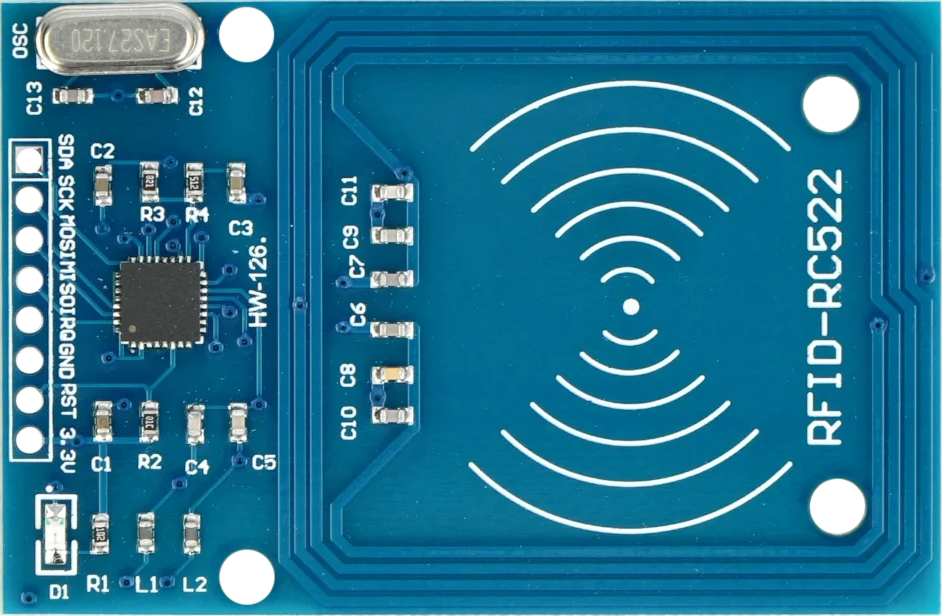
 Design with RFID-RC522 in Cirkit Designer
Design with RFID-RC522 in Cirkit DesignerIntroduction
The RFID-RC522 is a versatile and cost-effective RFID (Radio Frequency Identification) reader/writer module that operates at a frequency of 13.56 MHz. It is based on the NXP MFRC522 RFID chip and is capable of reading and writing to a wide range of RFID tags and cards compliant with the ISO/IEC 14443 A/MIFARE standard. Common applications of the RFID-RC522 include access control, contactless payment systems, and identification tracking.
Explore Projects Built with RFID-RC522
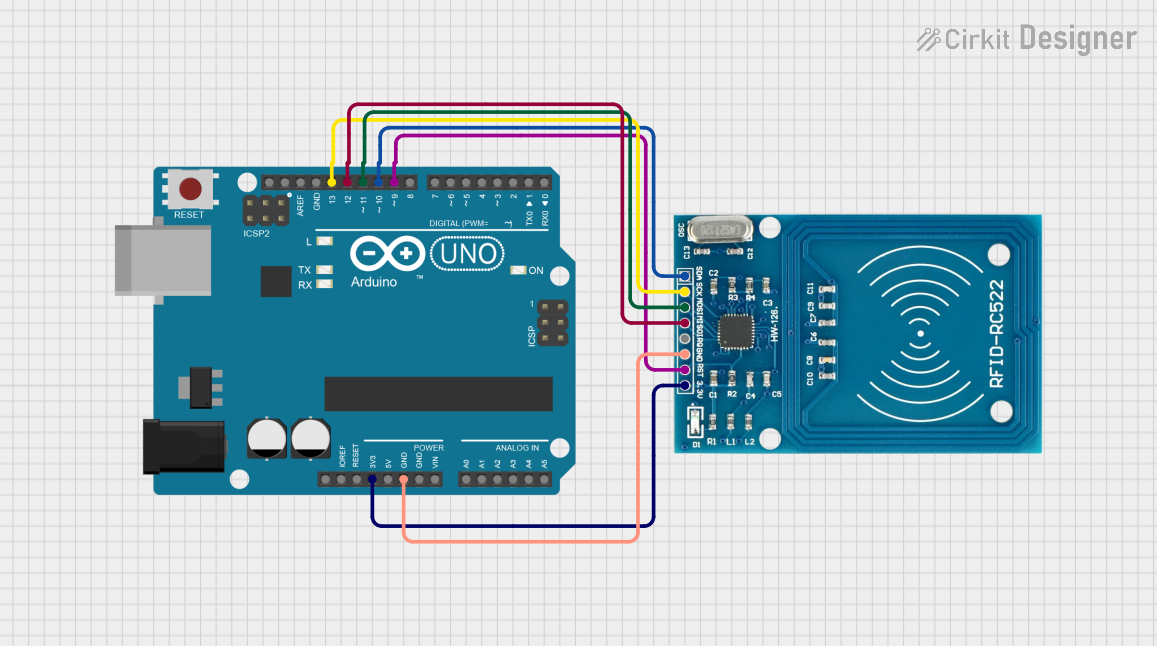
 Open Project in Cirkit Designer
Open Project in Cirkit Designer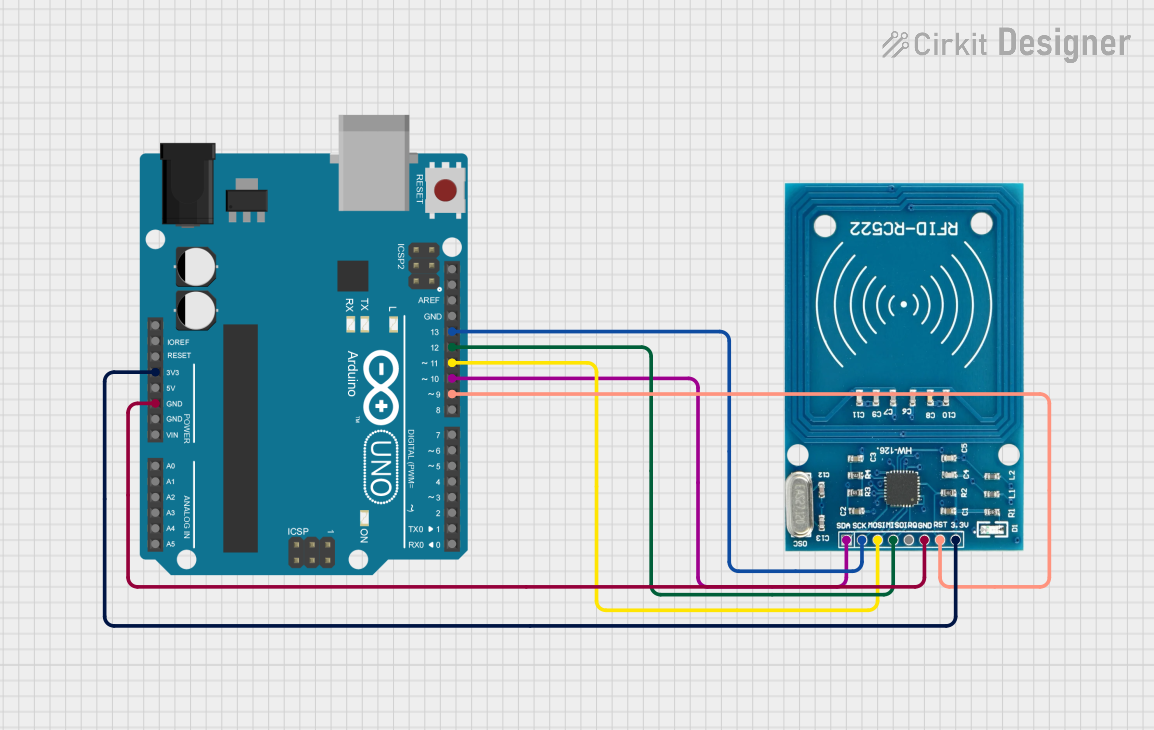
 Open Project in Cirkit Designer
Open Project in Cirkit Designer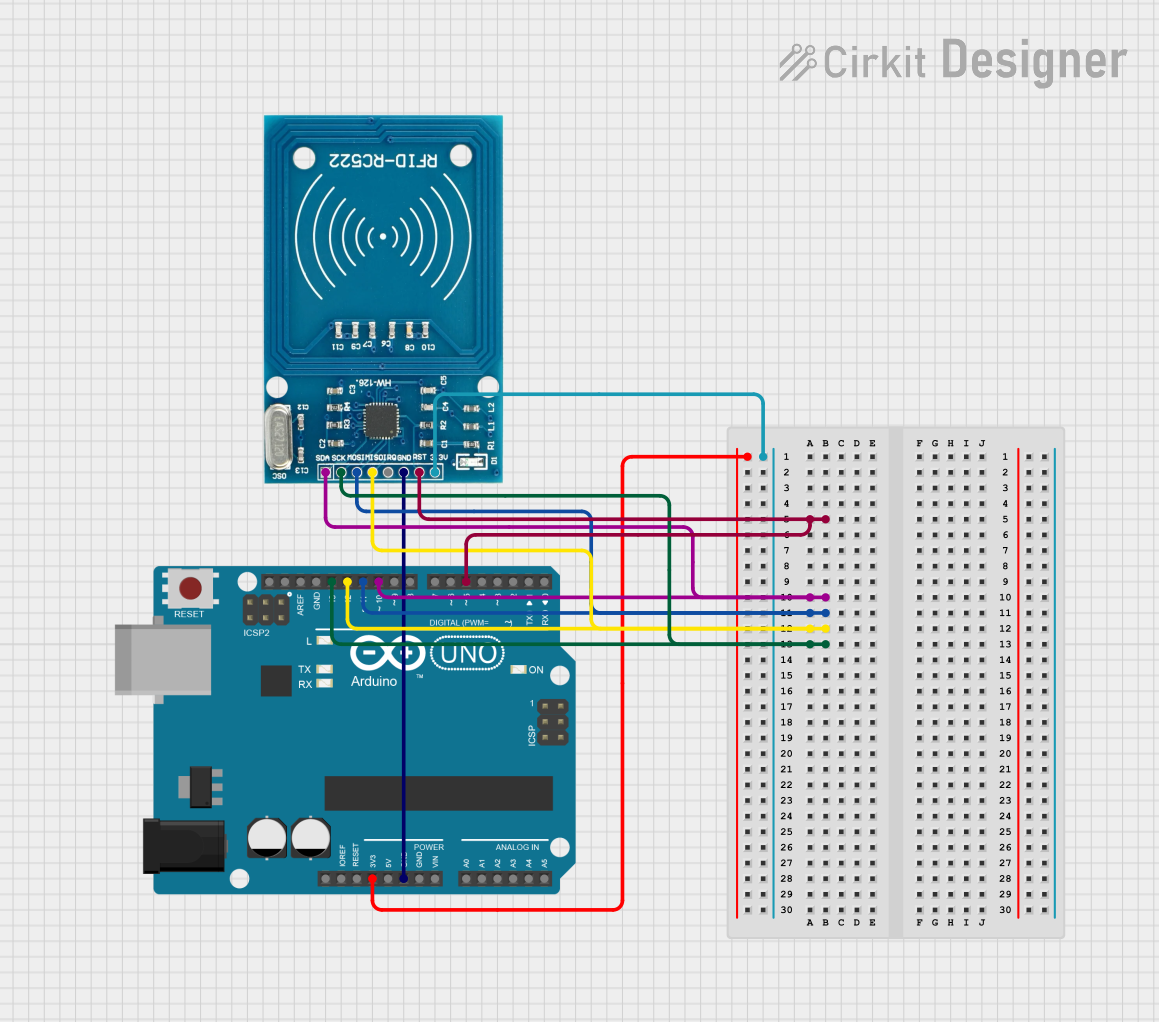
 Open Project in Cirkit Designer
Open Project in Cirkit Designer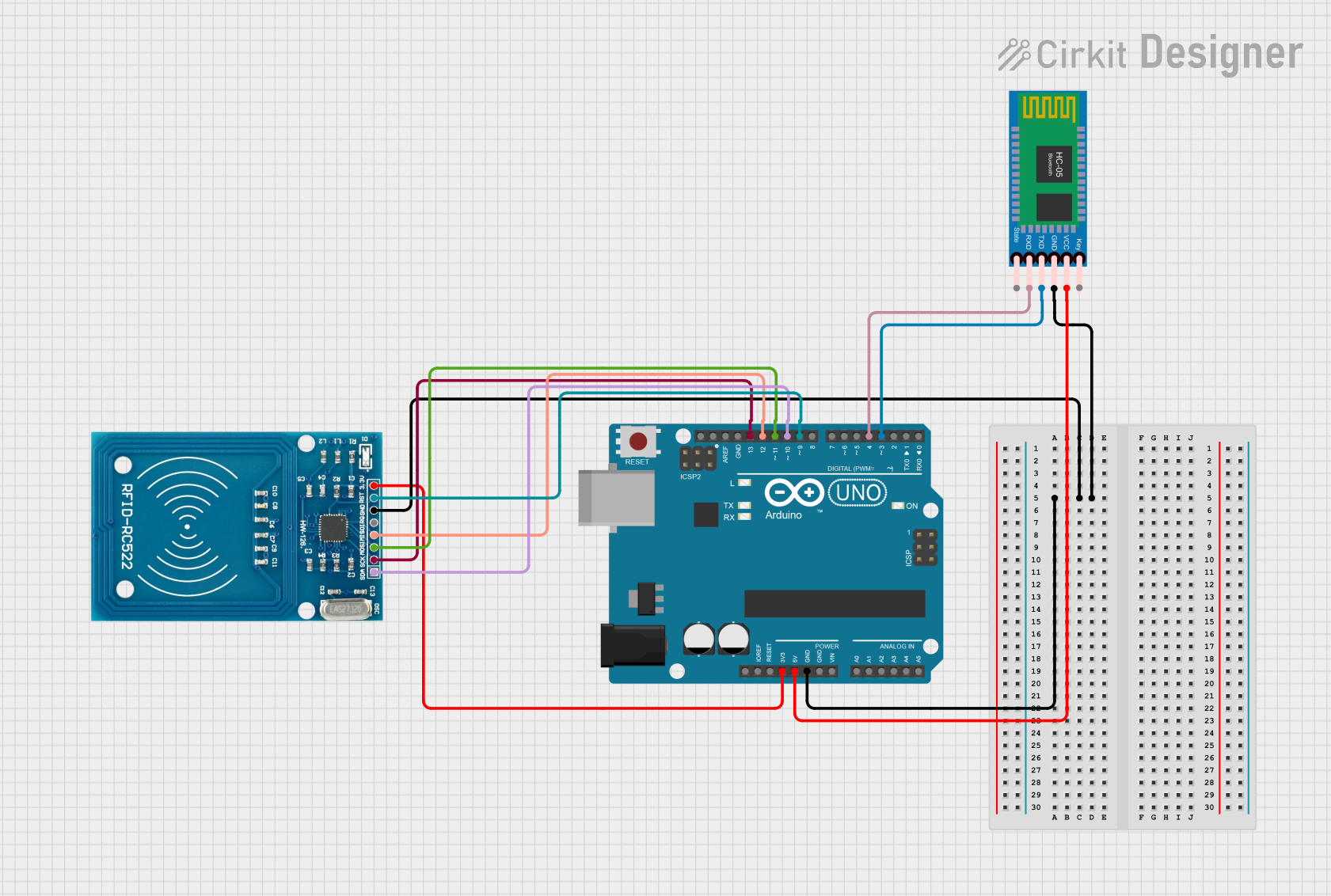
 Open Project in Cirkit Designer
Open Project in Cirkit DesignerExplore Projects Built with RFID-RC522

 Open Project in Cirkit Designer
Open Project in Cirkit Designer
 Open Project in Cirkit Designer
Open Project in Cirkit Designer
 Open Project in Cirkit Designer
Open Project in Cirkit Designer
 Open Project in Cirkit Designer
Open Project in Cirkit DesignerTechnical Specifications
Key Technical Details
- Operating Frequency: 13.56 MHz
- Supply Voltage: 2.5V to 3.3V
- Current Consumption: 13-26 mA (operating); 10 uA (sleep)
- Supported Card Types: MIFARE Mini, MIFARE 1K, MIFARE 4K, MIFARE Ultralight, MIFARE DESFire, and other ISO/IEC 14443A compatible cards/tags
- Communication Interface: SPI
- Reading Distance: Up to 50 mm (depending on tag type)
- Operating Temperature Range: -20°C to +80°C
Pin Configuration and Descriptions
| Pin Name | Description |
|---|---|
| SDA | Serial Data Signal (SPI SS) |
| SCK | Serial Clock Signal (SPI SCK) |
| MOSI | Master Out Slave In (SPI MOSI) |
| MISO | Master In Slave Out (SPI MISO) |
| IRQ | Interrupt Request (active low) |
| GND | Ground |
| RST | Reset Signal |
| 3.3V | Supply Voltage (3.3V) |
Usage Instructions
Interfacing with a Microcontroller
To use the RFID-RC522 with a microcontroller, such as an Arduino UNO, follow these steps:
- Connect the module to the microcontroller using the SPI interface.
- Ensure that the module is powered with a 3.3V supply to avoid damaging the device.
- Use the appropriate library for the RFID-RC522, such as the
MFRC522library available for Arduino.
Example Arduino Code
#include <SPI.h>
#include <MFRC522.h>
#define SS_PIN 10
#define RST_PIN 9
MFRC522 mfrc522(SS_PIN, RST_PIN); // Create MFRC522 instance
void setup() {
Serial.begin(9600); // Initialize serial communications
SPI.begin(); // Init SPI bus
mfrc522.PCD_Init(); // Init MFRC522 card
Serial.println("Scan a MIFARE Classic card");
}
void loop() {
// Look for new cards
if (!mfrc522.PICC_IsNewCardPresent() || !mfrc522.PICC_ReadCardSerial()) {
delay(50);
return;
}
// Show UID on serial monitor
Serial.print("Card UID:");
for (byte i = 0; i < mfrc522.uid.size; i++) {
Serial.print(mfrc522.uid.uidByte[i] < 0x10 ? " 0" : " ");
Serial.print(mfrc522.uid.uidByte[i], HEX);
}
Serial.println();
// Halt PICC
mfrc522.PICC_HaltA();
// Stop encryption on PCD
mfrc522.PCD_StopCrypto1();
}
Important Considerations and Best Practices
- Always use a 3.3V power supply for the RFID-RC522 to prevent damage.
- Keep the RFID-RC522 away from metal surfaces as they can interfere with the RF field.
- Ensure that the antenna area of the module is not obstructed for optimal reading distance.
- Use the reset pin to hard reset the module if necessary.
Troubleshooting and FAQs
Common Issues
- RFID tag is not detected: Ensure that the tag is within the operational range and that there are no obstructions or interference from metal objects.
- Communication errors: Check the wiring and connections, and ensure that the SPI interface is correctly configured.
- Inconsistent reads: Verify that the RFID tags are compatible with the module and are not damaged.
Solutions and Tips
- Improving read range: Position the antenna of the module away from other electronic components and metal surfaces.
- Handling multiple tags: Implement anti-collision algorithms to read multiple tags in the field of the reader.
- Power issues: If the module is not functioning correctly, check the power supply for stable voltage and sufficient current.
FAQs
Q: Can the RFID-RC522 write to all types of RFID tags? A: The RFID-RC522 can write to tags that are compatible with the ISO/IEC 14443 A/MIFARE standard.
Q: What is the maximum reading distance of the RFID-RC522? A: The maximum reading distance is up to 50 mm, but this can vary depending on the tag type and environmental conditions.
Q: Can the RFID-RC522 be used with a 5V microcontroller? A: While the RFID-RC522 operates at 3.3V, level shifters can be used to interface with 5V microcontrollers. However, care must be taken to ensure that the RFID-RC522 module itself is powered with 3.3V.
Q: Is it necessary to use the IRQ pin? A: The IRQ pin is not required for basic RFID reading and writing operations but can be used for more advanced applications that require interrupt-driven events.